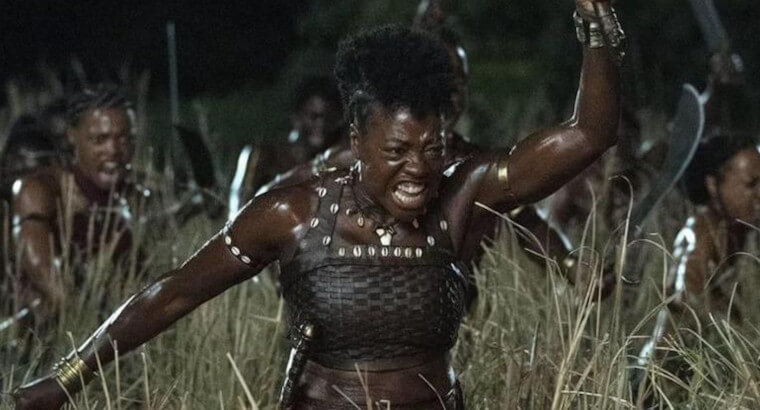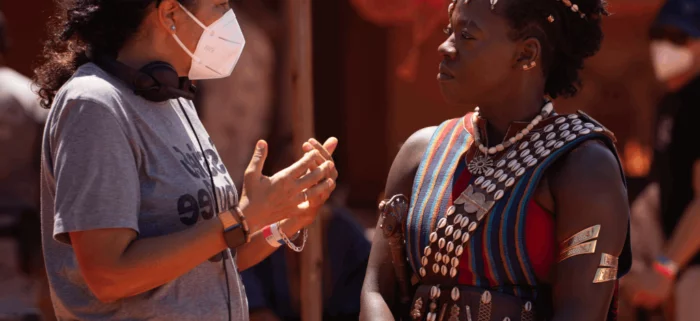The Woman King Film Whitewashes the Hardships of Real People in South Africa
The Woman King, Gina Prince-newest Bythewood’s film, is about the Amazons of Dahomey, an iconic all-female African army from the 1800s. The action occurs in present-day Benin, a country in west Africa. Shooting locations in South Africa’s KZN and Western Cape regions were designed to look like they were in west Africa, but the movie wasn’t actually shot there.
The movie has received mostly favorable reviews, but there have been those who warn against putting too much stock in box office success at the expense of accuracy. In a time when Hollywood is telling fresh narratives about the past while disregarding the present, I think it’s important to highlight the movie’s incorporation of the African environment.
The Woman King was just being captured on camera in the coastal town of Kleinmond when my relatives and I left Cape Town for Canada. The depiction of the town left quite an impression on me.
In the movie, the town of Kleinmond serves as the backdrop for several battle scenes that serve to elevate Africa’s historical significance. However, the true story of the village revolves around the fight and ongoing persecution of black individuals. The Woman King depicts a whitewashed Kleinmond, where black people and their communities have been electronically removed.
It’s standard procedure to substitute a different location for one used in a movie. Because of the region’s established movie facilities and generous monetary support, the Western Cape has become a popular destination for Hollywood directors and their crews. The variety of wildlife in South Africa isn’t just beautiful, but also commercially viable.
However, African cities and other locations often serve as a stand-in for a bog standard Hollywood setting. The movie Blood Diamond, for instance, was actually shot in Cape Town, although it is situated in Sierra Leone. City streets of Johannesburg were used for the fight sequences in the more latest movie Avengers: Age of Ultron.
Although these exaggerations are typical in the international movie industry, they can also misrepresent an entire continent and its past. Even when trying to tell African narratives, Hollywood reinvents the genuine past and geographical makeup of the countries to satisfy mainstream audiences, as evidenced by The Woman King’s utilisation of Kleinmond as a setting.
Kleinmond
Apartheid urban preparation can be seen in Kleinmond. During the time of racial segregation, white minority leaders established a system of segregated advancement and settled various racial communities in geographically distinct areas.
Beginning in the 1850s, the village’s native inhabitants were family members who fished the Atlantic for their livelihood. The Apartheid government demolished Kleinmond in the 1950s when it was designated as a “white group area,” forcing its residents to relocate to Protea Dorp, a township built into the slope of a mountain near the town dump. Petrus Johannes Fredericks, a native fisher, attested in a letter to having spent his childhood in Kleinmond harbor before his family was forcibly relocated. He chronicles the never-ending fight for access to limited government fishing rights.
Africa’s Cinematographic History and Its Reimagining

Kleinmond is a small town in South Africa, and it’s strange that it was used as a background image for the fight sequences in The Woman King, which is about a mythical, magnificent African past. The real battle for the sea and the territory is still going on, as evidenced by the regular violent demonstrations in the region. Current riots for better living conditions turned a place called Perdekop into a real battlefield, with smoldering tires placed around its perimeter.
The intricacies of Kleinmond and the struggles of its citizens are similarly whitewashed for the benefit of tourists. Officials have declared the area to be the “best representation of mountain fynbos in the Western Cape and (the Kleinmond biome is) a globe World Heritage Site” due to its stunning scenery and abundance of wildlife. However, this history has not produced nearly enough long-term jobs, and so many men in Kleinmond are forced to resort to the illicit sale of threatened abalone to make ends meet.
Western Cape, South Africa Stood in for the Beninese Harbor of Ouidah
There are numerous instances of black people being erased or misrepresented in white South African art. JH Pierneef, a favorite of the apartheid regime, painted bleak, meticulous panoramas of South Africa which were displayed in official building structures. He never depicted the troubled human life that existed in those settings, omitting the native population of those territories who happened to be black. White liberals favored Irma Stern because she depicted “genuine” African life in her works of art of the Bantustans and black reserves of South Africa. She decided to disregard the daily horrors of apartheid in order to portray what she believed to be the African aspiration.
Unspoiled Africa
The Woman King’s portrayal of Africa as relatively unpopulated and immaculate continues this simplified account. And yet, what does it say when a digitally rendered white settlement incorporates the real, war-torn Perdekop as its centerpiece? Perhaps a picture of made-up homes has been superimposed on the Overhills neighborhood?
For my job as a creative director, I consider not only the tales we are telling now and those that will last but also the form that our democratic accountability takes. Because of my personal connection to Kleinmond, I find the trend toward electronically emptying the African scenery and ignoring its inhabitants in order to employ the image as the painting for a redeeming story to be deeply troubling.
These points, however, should not be taken to imply that The Woman King doesn’t effectively challenge false notions about Africa. African women are portrayed as powerful, capable individuals; Africans are portrayed as the keepers of a storied cultural heritage; and Africans are portrayed as the magnificent keepers of long-lost ideologies. Yet at what price does the black protagonist in this fantasy seek redemption? By omitting crucial historical context, the movie presents a distorted picture of Africa for the benefit of its western audience.



